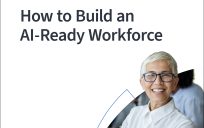Digital forms have been a welcome replacement for government agencies and constituents alike, but shifting from paper to online processes does come with unique challenges.
Hollie Bodiford-Taylor, Office of the Commissioner, Office of the Chief Scientist, Office of Laboratory Safety U.S., Food and Drug Administration, offered insight on why and how to successfully make the transition to digital forms during the latest CX Community of Practice on Feb. 12.
Here are a few highlights from the session:
A Few Ways Digital Forms Have Changed Things for the Better
Bodiford-Taylor used an example of a doctor’s office to demonstrate how digital forms have made things simpler for employees and constituents.
“Remember the days when you went to a doctor’s office and they pulled your file out of a cabinet?” she said. “Unless that folder was circulated around, the process wasn’t streamlined and not everyone had the information they needed.”
She then compared it to how doctor’s appointments operate now, with the ability to fill out forms before you even arrive, or how you’re handed an iPad upon arrival to quickly double-check information.
“Check-in is so quick for patients now,” she said. “It’s also reduced the workload for employees and reduced the costs for agencies.”
Ensuring Information Is Collected Effectively
In order to ensure information is being entered correctly into your system, Bodiford-Taylor recommends reducing the free-flow fields as much as possible.
“Creating standardized fields makes sure that you don’t have to have someone specifically curating your data as it comes in,” she said.
She also suggested using artificial intelligence so that when, for example, someone types “blvd” versus “boulevard,” the system knows that both terms mean the same thing.
Make Your Forms Inclusive for All
Bodiford-Taylor said there are many ways to make your forms more inclusive; some of them are even built into the programs where you can create the forms.
“You need to know who your audience is to the best of your ability, so you can tailor your forms to their needs,” she said. “A lot of programs have accessibility prompts now as you’re making the form to help you be inclusive.”
Want to get more information about creating and using digital forms? Watch the recording of this session and be sure to join us next month for our next CX CoP, Human-Centered Design in CX, on March 11.





Leave a Reply
You must be logged in to post a comment.